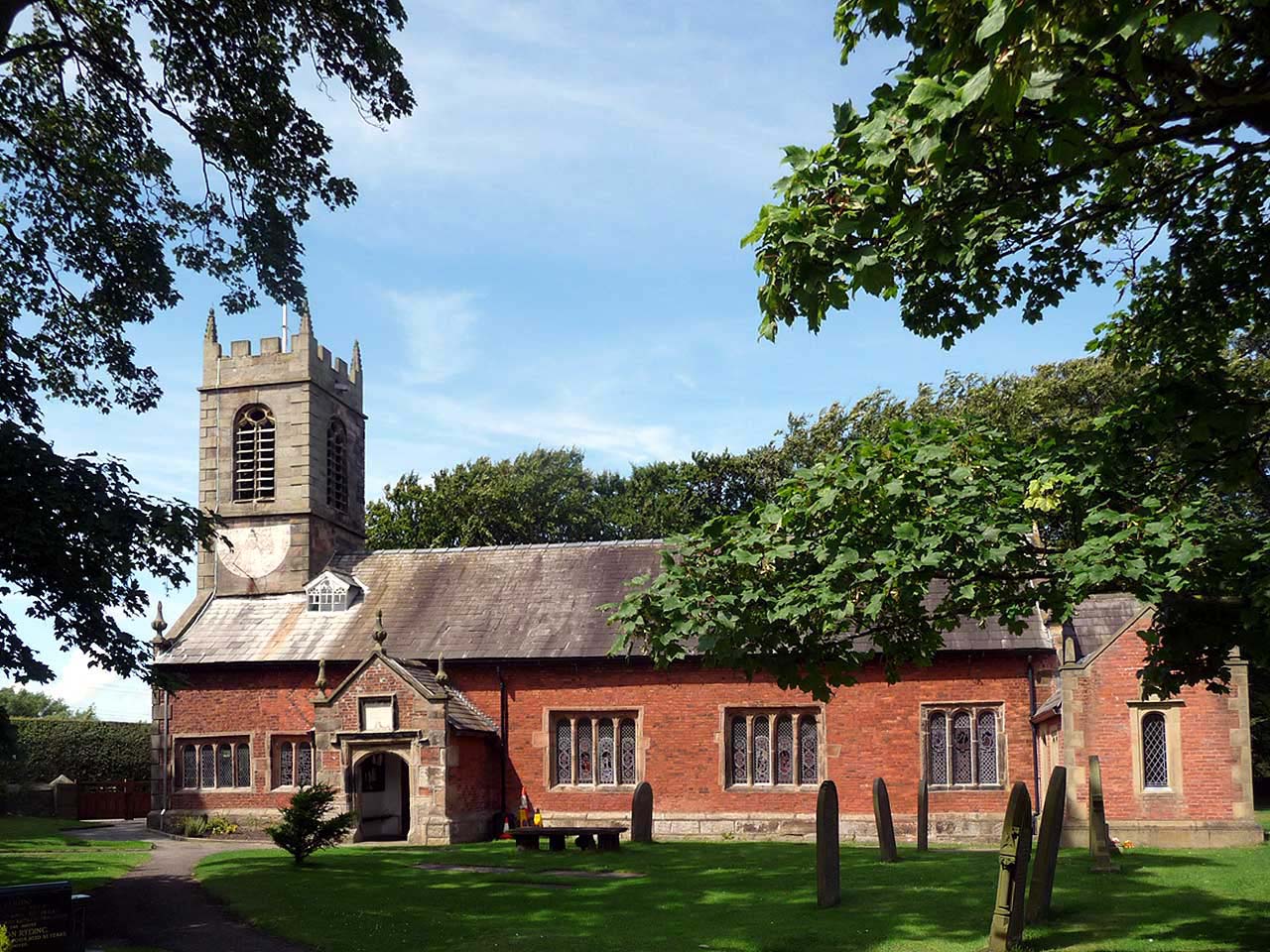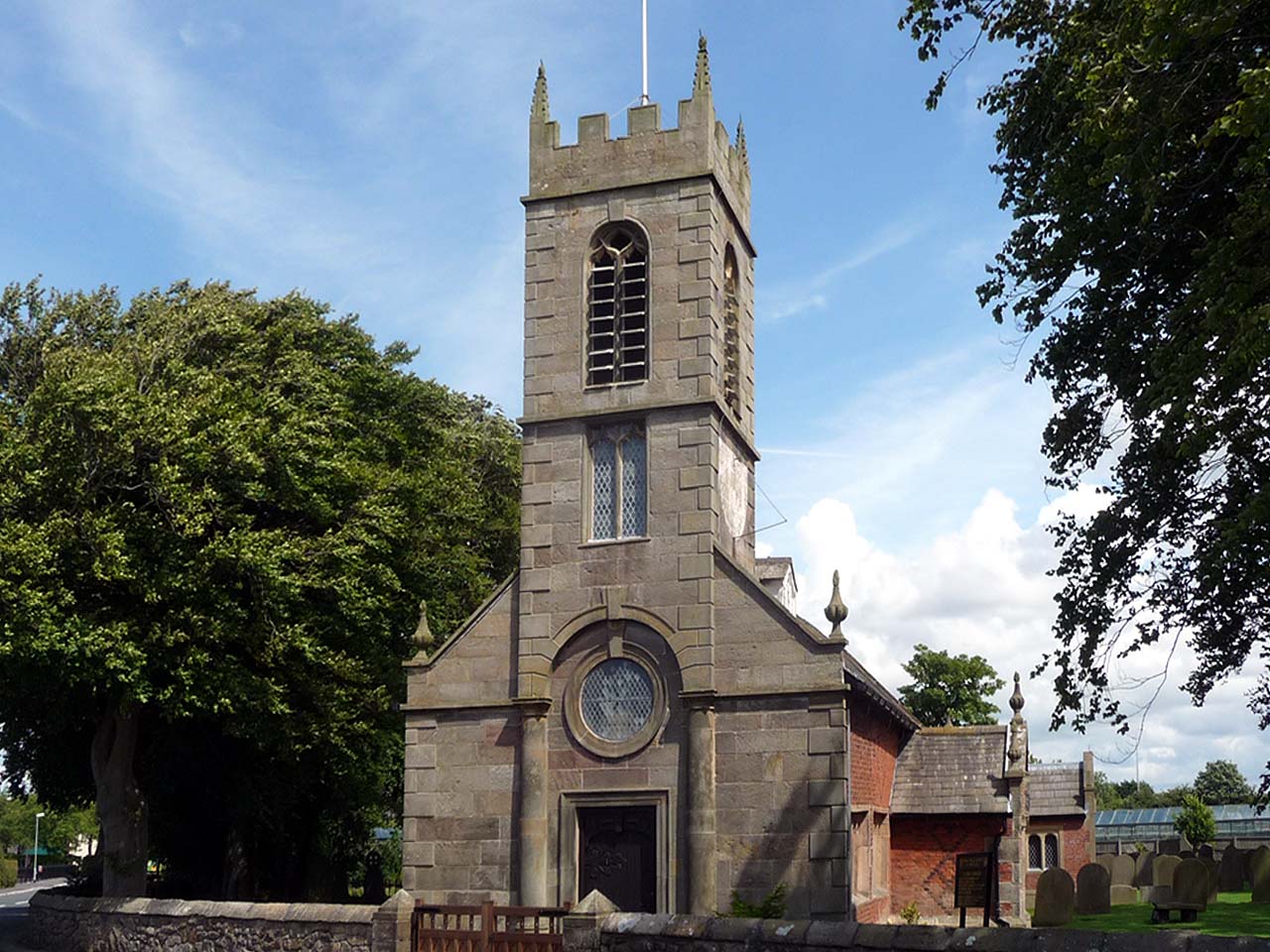 |
The Church of St Michael, Hoole |
 |
St Michael's church dates back to 1628 AD but there is reason to believe that a place of worship existed in Hoole as far back as the eleventh century, if not before. St. Michael’s church is not a museum but a living church praising the glory of God for generations past and present and hopefully also for generations to come.
A reference made in records during the reign William the Conqueror states that Rodger de Poictu, in the year of 1094, granted to the Monastery of St. Martin of Sees-in Normandy the Priory of St. Mary at Lancaster, and all the dependant churches chapels and priories therein, with Hoole being under the direct jurisdiction of Lancaster Priory.
In the reign of King John (1199-1216) there is a note directly appertaining to the chapel at Hoole in that one “Walter de Hoole was an inquisitor of the Wapentake of Leylandsir” followed by the information that in the year 1280, Amory de Hoole made a grant to “God and St. Mary” of one acre of land in Much Hoole for the upkeep and maintenance of the lights in the chapel of Little Hoole. This means it is reasonable to assume that a chapel existed in Hoole in the year 1216 AD. At around 1232-1237, Robert de Vilers gave to Ralph, the son of Henry de Hoole, 20 acres of land which Robert’s father had granted to Henry for life at a rent of 12d. per anum. Ralph gave the land to the Cistercian monks of Merrivale, and his daughter Beatrice de Hoole in her widowhood handed over her land making a total of “up to four score acres” at the Abbot’s choice. The monks could make a mill and mill pool, but should they lead the mill stream through Ralph’s land they were to make a reasonable exchange for what they might take for the purpose.
In the year 1294 the land was granted to Master Adam de Walton of Ulnes Walton who in turn gave the land to his son , also called Adam of Hoole. In 1346 , William, the Abbot of Merrivale tried to claim the land back, but he was unsuccessful.
Although there is no information regarding the size, shape , or construction of the mill or the monastery, what is obvious is the knowledge that the people of Hoole have worshipped here for 700 years or more.
In the year 1628 a chapel of ease, coming under the jurisdiction of Croston Parish church, was built in the township of Much Hoole by Thomas Stones of London, and in July 1641 became the Parish church of Hoole by an act of Parliament duly signed by King Charles the First.
The church was dedicated to St. Michael and All Angels for the townships of Much and Little Hoole, with a messuage called “Carr House” in Bretherton being assigned to it. The Patronage was vested in the builder, and a seventh part of the rent (£53 6s. 8d.) due to the Crown from the rectory of Croston was to be paid by the rector of Hoole, the Reverend Robert Fogg, a very zealous Puritan.
The Reverend Fogg had been Curate at Hoole in 1632 and again in 1639; Jeremiah Horrocks the astronomer had been acting for him in 1639 whilst carrying out his duties as tutor to the children of the Stones family of Carr House. In the year 1646 Robert Fogg was “placed” in Bangor Isycoed Rectory on the expulsion of the Royalist Henry Bridgeman. This position he lost during the Restoration period in the year 1660 and was silenced for “Nonconformity”.
 | |
Photograph supplied by and © of Brian Young |
 | |
Photograph supplied by and © of Brian Young |
| Hoole Home & Contents | ©Lancashire OnLine Parish Clerks | Lancashire Home |